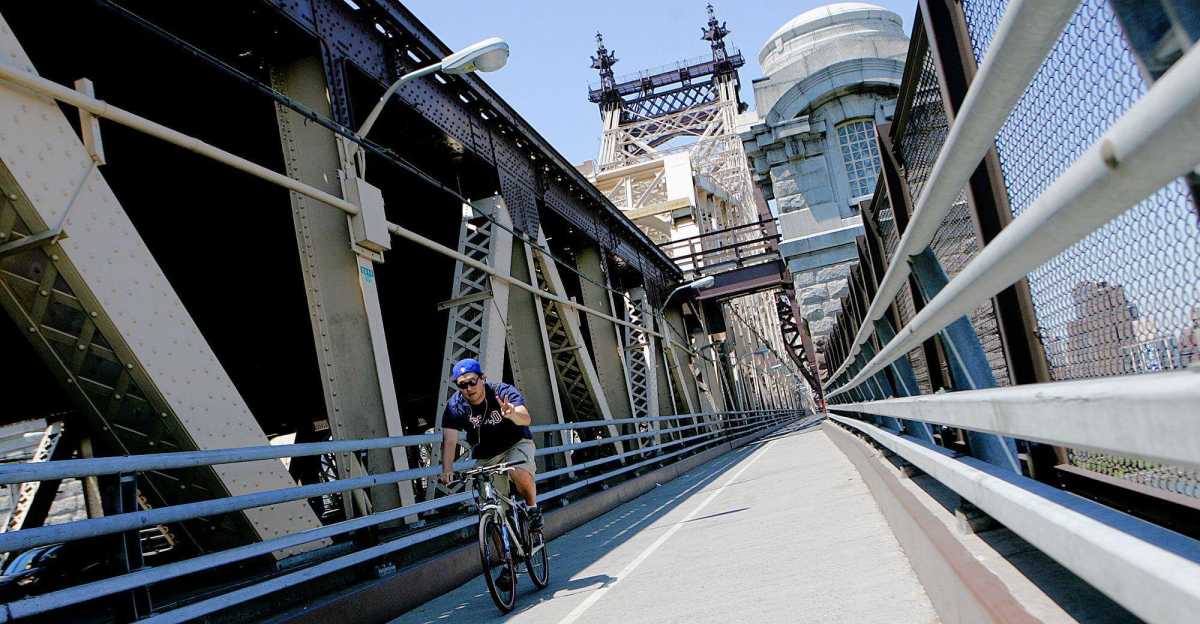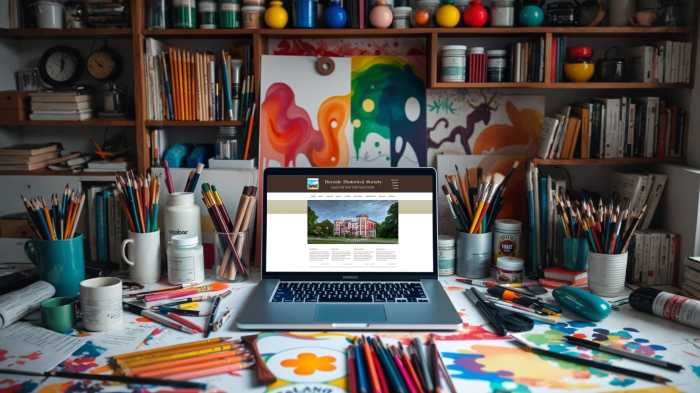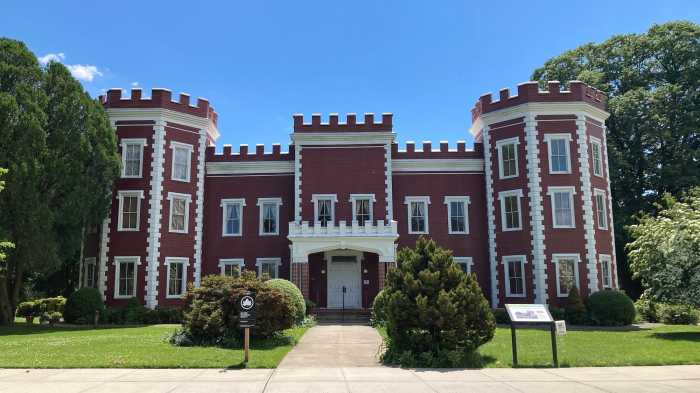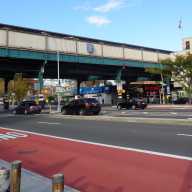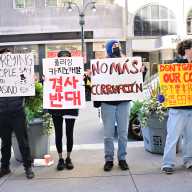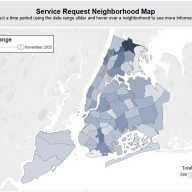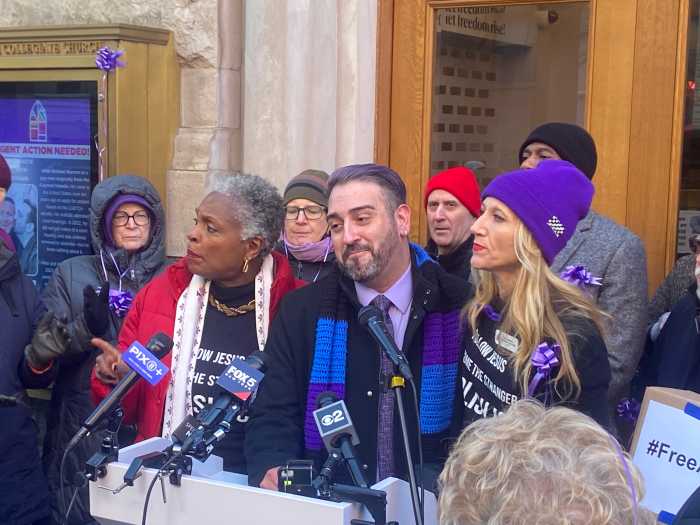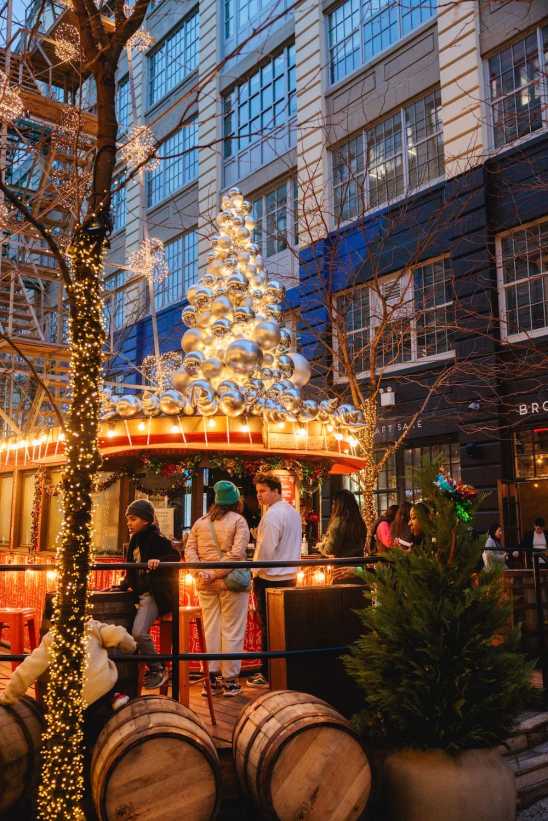City officials announced Tuesday that pedestrians and cyclists will soon have dedicated lanes on the Ed Koch-Queensboro Bridge, resolving a long-standing safety concern that forced both groups to share a narrow, congested path.
Beginning May 18, the bridge’s north outer roadway will be reserved exclusively for cyclists, while the south outer roadway—currently used by vehicles—will be converted into a pedestrian-only lane.
The Queensboro Bridge, which connects Long Island City to Midtown Manhattan, is the only city-owned East River crossing that has lacked separate paths for pedestrians and cyclists. Until now, both groups were confined to the north outer roadway, a cramped 11-foot-wide lane that has drawn frequent complaints about overcrowding and safety.
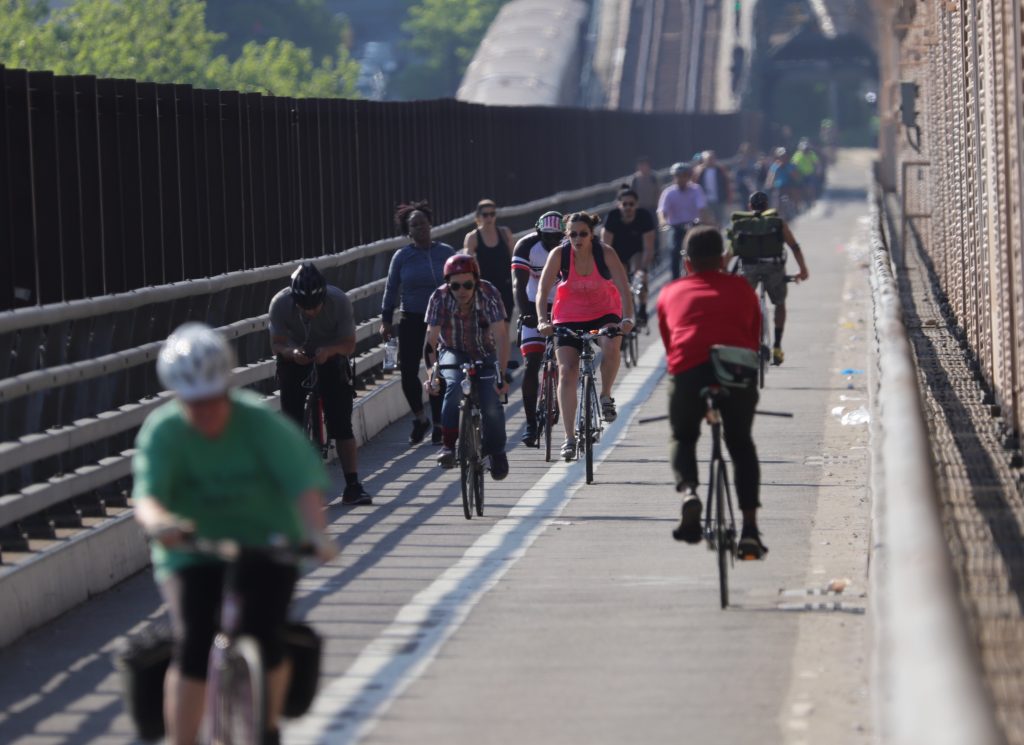
Long fight for Queensboro Bridge path
Advocates have fought to open a separate pedestrian path, citing dangerous overcrowding that has led to conflicts among cyclists, pedestrians and micro mobility users. Advocates have called on the NYC Department of Transportation (DOT) to open the path without delay and “without regard to delays of construction,” which was being done on the bridge’s upper level last year.
Council Member Julie Won, who represents District 26 in western Queens, praised the long-overdue change and emphasized the impact of sustained public pressure.
“After years of delays, the opening of the Queensboro Bridge south outer roadway is a huge safety win for the 10,000 pedestrians and cyclists who cross the bridge every day,” Won said. “From marches across the Queensboro Bridge with advocates to urging DOT at hearings and in letters to open the south outer roadway on time, our collective advocacy to open the pedestrian pathway helped to make this opening a reality.”
Once the new layout goes into effect, the pedestrian and cycling space on the bridge will double, while vehicle access will be reduced by one lane.
The new configuration had initially been delayed, with Mayor Eric Adams explaining through a City Hall spokesperson that he postponed the opening to ensure his team had fully assessed the traffic impact and safety implications.
The double-decker Queensboro Bridge was built in 1909. Adams cited the span’s history by saying it has connected New Yorkers between Manhattan and Queens for 100 years while offering “breathtaking views” of the cityscape.
“Now, our administration will make it even easier and safer to do so,” Mayor Adams said. “The more we make it safe to walk and bike, the more people utilize their bikes, and thanks to new cycling infrastructure in communities near the bridge, more and more pedestrians and cyclists are utilizing the Queensboro Bridge. Today’s announcement doubling the space available for pedestrians and cyclists builds off those upgrades and is a win-win for everyday New Yorkers.”
The opening of the south outer roadway comes after the DOT’s most recent bike count, conducted from April 1 to Oct. 31 last year, showed that bike traffic over the East Side bridges reached an all-time high four years in a row.
DOT Commissioner Ydanis Rodriguez said the city reached a record-high bicycle ridership because officials provided “safe, meaningful connections” to cyclists across the city.
“By reclaiming the south outer roadway for pedestrians, we’re helping create comfortable connections for the growing number of pedestrians and cyclists on the bridge, as well as helping all New Yorkers get around more easily without a car,” he said. “We look forward to delivering continued upgrades to each side of the bridge to improve cycling and pedestrian connections this summer.”
The Queensboro Bridge is the third city bridge over the East and Harlem Rivers to receive expanded pedestrian and bike infrastructure in recent years, with expanded space also added to both the Brooklyn Bridge in 2021 and the Washington Bridge in 2024.

‘Magical’ moment for bicyclists and pedestrians
Transit advocates and elected officials welcomed the long-awaited announcement, calling it a major win for safe, equitable transportation infrastructure.
“It’s exciting to see DOT reallocating space to make our streets work best for everyone. The Queensboro Bridge has been almost infamous for its lack of adequate space for pedestrians and active transit,” said Sara Lind, co-executive director of Open Plans. “New Yorkers have asked for this and DOT is delivering.”
Lind added that expanding space for non-vehicular travel would do more than prevent injuries—it would encourage more New Yorkers to walk and bike.
“This will prevent injuries but since we know that lack of safe space actually stops many New Yorkers from biking, it will also encourage more biking and walking across the bridge,” she said. “That’s a great thing for our city, and ideally, DOT will quickly prioritize similar bridge projects to improve how New Yorkers can safely get around the city.”
Transportation Alternatives, which staged an April rally to call for the pedestrian path’s opening, also celebrated the news. Ben Furnas, the organization’s executive director, said he was “thrilled” by the mayor’s decision.
“Just a month after our People’s Ribbon Cutting on the Queensboro, New Yorkers will finally have more space to get over the bridge by foot or by bike,” Furnas said. “We’ve been calling for this for years, and we’re thrilled that Mayor Adams has scheduled an opening date for the pedestrian path this Sunday. There are few things as magical as walking or biking over a bridge in New York City, and we can’t wait to do it safely on the Queensboro.”
Danny Pearlstein, policy and communications director for Riders Alliance, also applauded the city’s move, but emphasized that more action is needed—particularly for bus riders.
“It’s great to see the mayor finally coming around after so much effort was invested in this critical project,” Pearlstein said. “As bus riders, we’d love to see the same thing on Fordham Road, where planners spent years designing a busway that got scrapped because wealthy suburban opponents had the mayor’s ear.”
Senate Deputy Leader Michael Gianaris, who represents portions of Queens including Astoria, praised the long-delayed opening and called for greater transparency going forward.
“After years of advocacy, many of us were excited to see DOT complete the work to open new, dedicated pedestrian paths on the Queensboro Bridge,” Gianaris said in a statement. “This project will make crossing the bridge safer and more enjoyable for everyone. It is a shame this announcement was needlessly delayed without explanation, but I am glad this day has finally come.”
State Sen. Kristen Gonzalez, who represents areas in Queens, Brooklyn and Manhattan, described the news as a “victory for every New Yorker who’s every crossed the Queensboro Bridge and felt unsafe.”
Gonzalez, who was one of several elected officials calling on the Adams Administration to open the pedestrian pathway, said the announcement was proof of the power of organizing.
“It’s not just about a bridge, it’s about building city infrastructure where safety, equity and accessibility come first,” Gonzalez said in a statement. “I am proud to have stood alongside neighbors and advocates in this fight.”

